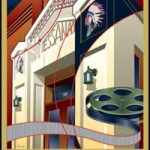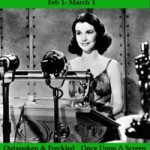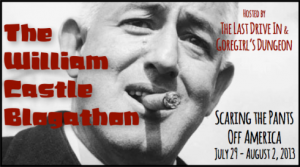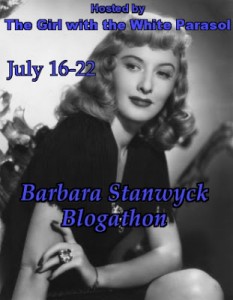More Western Filmmakers Final Resting Places
This month we return to the topic of the final resting places of Western filmmakers, visiting the gravesites of several actors and actresses across the Greater Los Angeles area.
Actor Kirk Douglas lived to the venerable age of 103, when he was buried at Westwood Memorial Park. He’s buried alongside his son Eric, who died in 2004, and his wife Anne, who passed away the year following her husband, aged 102. Kirk Douglas was in a number of Westerns over the years, including Along the Great Divide (1951), The Big Trees (1952), and Man Without a Star (1955); one of his best-known Westerns was Gunfight at the O.K. Corral (1957), in which he played Doc Holliday.

Kirk Douglas’s leading lady in The Big Trees (1952), Eve Miller, is interred with her parents at Forest Lawn Hollywood Hills. Sadly, Miller was only 50 when she died. She never obtained top stardom but worked steadily in films and television for roughly 15 years. Her other Western films included appearing opposite Charles Starrett in Buckaroo From Powder River (1957) and costarring as Sterling Hayden’s leading lady in Kansas Pacific (1953).

Western star Forrest Tucker is also interred at Forest Lawn Hollywood Hills. He appeared in countless Westerns, including many made at Republic Pictures; some of my favorites are Gunfighters (1947), Hellfire (1949), Rock Island Trail (1950), California Passage (1950), Jubilee Trail (1954), and The Quiet Gun (1957), to name just a few. I could easily go on! He also starred in the TV series F Troop (1965-67). Tucker was 67 when he passed on in 1986.

Westerns may not be the first genre associated with singer-actor Dean Martin, but he appeared in a handful; he’d be worth mentioning if only for his work in one of the greatest Westerns ever made, Howard Hawks’ Rio Bravo (1959). I wrote about that favorite film here in 2021. The most notable of Martin’s other Westerns might be The Sons of Katie Elder (1965), which like Rio Bravo costarred John Wayne. Martin was 78 when he died in 1995. He’s interred at Westwood Memorial Park.

Fred MacMurray made many different types of films throughout his long career, including his notable association with Disney. Westerns were scattered throughout his credits, including The Texas Rangers (1936) early on; he later made a number of solid Westerns in the ’50s including Quantez (1957), Day of the Badman (1958), and Good Day for a Hanging (1959). MacMurray died in 1991 and is interred at Holy Cross Cemetery in Culver City along with his second wife, actress June Haver.

Like Fred MacMurray, Robert Young may be best remembered today for his years playing a father on a TV sitcom, but he appeared in a couple very good Westerns, including Fritz Lang’s Western Union (1941) and the lesser-known but well-done Relentless (1948), directed by George Sherman. Young was 91 when he passed away and is buried at Forest Lawn Glendale.

Natalie Wood only made a couple of Westerns, but she was in one of the very greatest of them all, playing Debbie in John Ford’s The Searchers (1956). I recently wrote here about revisiting that film via a new restoration at the 2024 TCM Classic Film Festival; it had a huge emotional impact. The same year The Searchers was released, Wood appeared in The Burning Hills (1956). She was buried at Westwood Memorial Park following her tragic death in 1981.

Another actress who worked with John Ford was Anna Lee, who over the years became a good personal friend of the director. Lee played supporting roles in Ford’s Westerns Fort Apache (1948) and The Horse Soldiers (1959); she also worked with Ford on non-Western films, most notably How Green Was My Valley (1941). As a side note, Lee’s daughter, Venetia Stevenson, appeared opposite Audie Murphy in Seven Ways From Sundown (1960), which I wrote about here in 2020. Like Natalie Wood, Lee is buried at Westwood Memorial Park; she’s interred with her last husband, writer Robert Nathan (Portrait of Jennie).

Noah Beery Jr. came from an acting family; he was the son of Noah Beery (Sr.) and the nephew of Wallace Beery. While he’s perhaps best remembered today as James Garner’s father “Rocky” on TV’s The Rockford Files (1974-80), Beery made a number of “B” Westerns over his long career. Among his Westerns were The Carson City Kid (1940) with Roy Rogers, Riders of Death Valley (1941) with Dick Foran and Buck Jones, Under Western Skies (1945) opposite Martha O’Driscoll, and the Tim Holt film Indian Agent (1948). He also appeared in the classic Red River (1948), in Randolph Scott and Budd Boetticher’s Decision at Sundown (1957), and in numerous other Westerns. Beery passed away in 1994 at the age of 81 and is buried at Forest Lawn Hollywood Hills.

We’ll conclude this month’s column with a visit to the gravesite of Leo Carrillo at Woodlawn Cemetery in Santa Monica. Carrillo appeared in several “B” Westerns, including titles starring Noah Beery Jr., and is especially known for playing Pancho in a series of Cisco Kid films released in 1949-50, followed by the Cisco Kid TV series (1950-1956). Carrillo’s family had deep roots in California, and his offscreen work on behalf of the state, including two decades on the California Parks Commission, may be an even greater legacy than his acting career. Among his achievements, Carrillo is credited with the state acquiring Hearst Castle. Today a California beach and two schools are named in his honor, and his Carlsbad Ranch is a tourist attraction which is on the National Register of Historic Places.

For additional photos of the burial sites of Western filmmakers, please visit my columns from May 2019, February 2022, November 2, 2022, November 29, 2022, April 2023, November 2023, and March 2024.
…
– Laura Grieve for Classic Movie Hub
Laura can be found at her blog, Laura’s Miscellaneous Musings, where she’s been writing about movies since 2005, and on Twitter at @LaurasMiscMovie. A lifelong film fan, Laura loves the classics including Disney, Film Noir, Musicals, and Westerns. She regularly covers Southern California classic film festivals. Laura will scribe on all things western at the ‘Western RoundUp’ for CMH.




















































































































